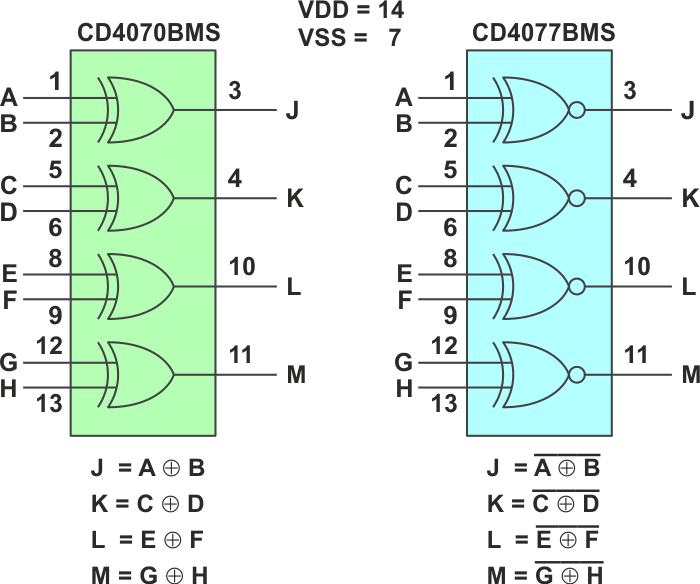Some years ago, back in 2005 to be specific, the project was a power supply for a low Earth orbiting satellite.
Part of our digital circuitry involved some logic gating using Exclusive-OR (Ex-OR) devices of type CD4070BMS. All was well until we were advised that the 4070 parts were not obtainable as radiation hardened products. Whether that would still be the case today I have no idea, but back then, it was so.
We were also told, however, that the part CD4077BMS exclusive-NOR (Ex-NOR) devices were available with radiation hardening. The two devices were compared as shown in Figure 1.
 |
||
| Figure 1. | The original Exclusive-OR device (left) versus the Exclusive-NOR replacement (right). | |
Someone must have been smiling on us that day because we discovered that our logic functions were not affected by having originally chosen exclusive-OR rather than exclusive-NOR devices. Our outputs F and G as seen in Figure 2 were the same versus the A and B inputs for using either the ‘4070 or the ‘4077 parts.
 |
||
| Figure 2. | As it turned out, our logic usage resulted in virtually the same outputs from both the original Ex-OR devices and the Ex-NOR replacements. |
|
Although the intermediate C signal was inverted from its original states in the Ex-NOR implementation, that didn’t matter because each signal path comprised two logic inversions that cancelled each other out.
It wasn’t planned that way. We just got lucky.